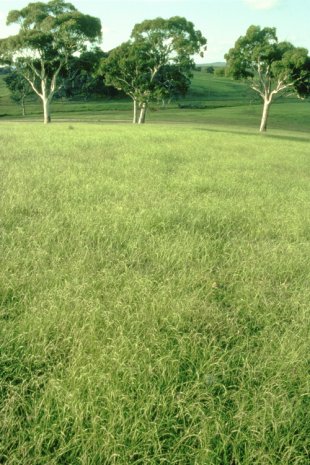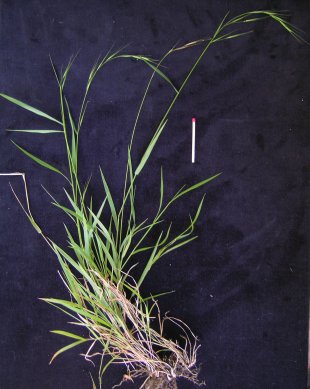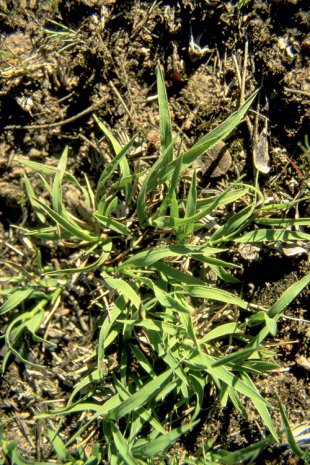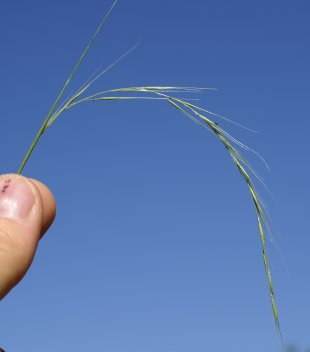
Weeping grass or microlaena
SCIENTIFIC NAME: Microlaena stipoides
CATEGORY: C3 perennial
IDENTIFICATION TIPS
- Yearlong-green perennial up to 60cm high, but often much shorter; short rhizomes present
- Lime green or blue green leaves, with a boat shaped tip and often a notch near the tip. Small hairy auricles
- Seedhead (to 15cm long) is fine and weeping. Each spikelet has two straight green awns to 20mm long
- Flowers from late spring to autumn
CLIMATIC & SOIL REQUIREMENTS
- Common in damp or semi-shaded areas
- Can become dominant in some pastures or shaded areas, especially where rainfall is higher. Where rainfall is lower (<650mm), it is only found in moist areas
- Occurs on low to high fertility soils with a pHCa<5.5. In natural stands it tends to become more abundant down to pHCa=3.9. Tolerant of high soil aluminium and drought
GRAZING & NUTRITIONAL VALUE
- High grazing value
- Digestibility ranges from 56-80%
- Crude protein 11.3-26.9 %
MANAGEMENT STRATEGIES
- High quality species that produces most feed from spring to autumn; winter growth is slow in cold areas
- Tolerant of moderate to heavy grazing pressure and should be kept short to maintain quality, especially over summer. However, heavy grazing in spring may reduce summer growth
- Will tolerate heavy shading from annuals in spring
- Responds strongly to increased soil fertility and the use of legumes, but needs to be kept short in autumn to allow clover establishment
- Rotationally graze for better leaf production and to allow seed set in spring and/or autumn
- Seed can be sown by broadcasting, mulching and using a crocodile planter in spring or autumn
SIMILAR PLANTS
- Common wheatgrass (Elymus scaber) and silvery grass (Vulpia spp.) have similar seedheads, but don’t have two straight awns per spikelet







